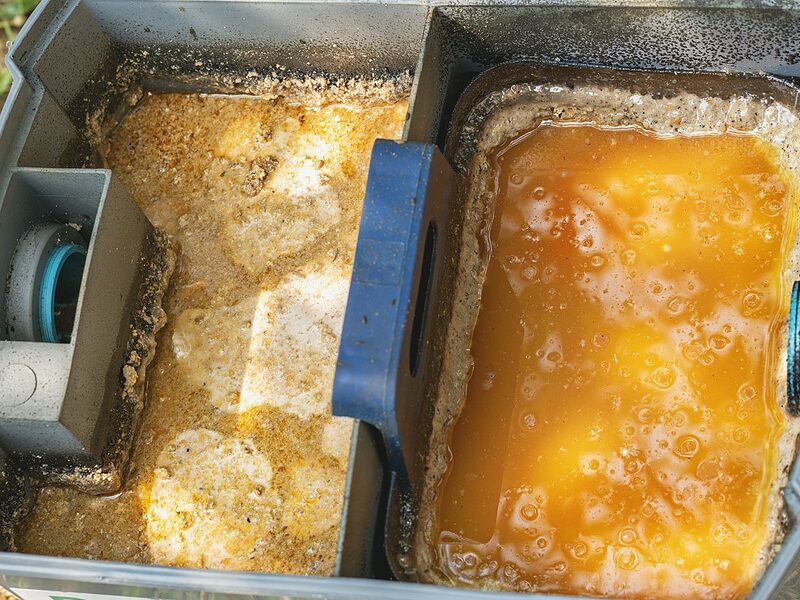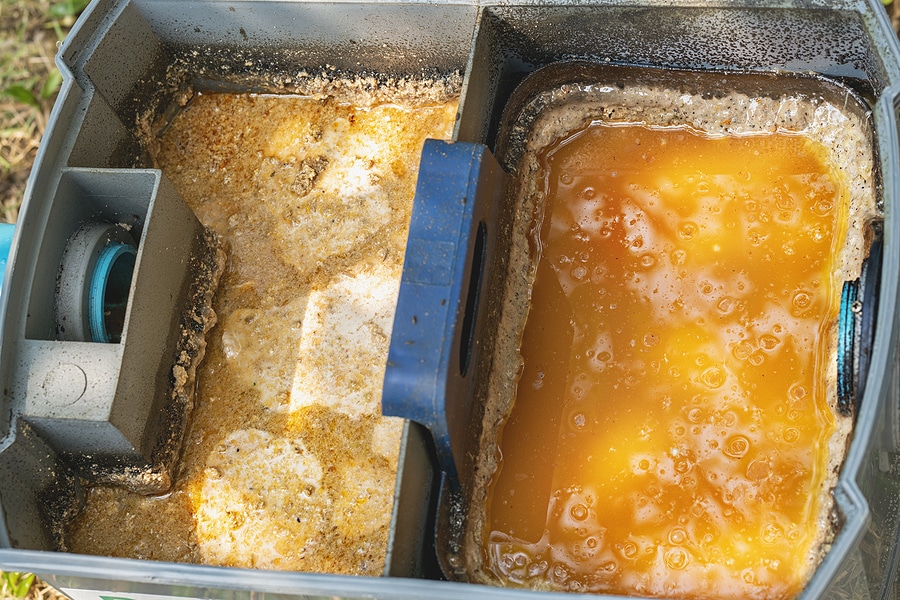Lead Pipes
Do You Have Lead Pipes in Your Home? Water mains in the UK are not…
Read more24 hr Emergency Callout

Blog
Did you know that every year, nearly half a million tonnes of grease and fat enter the UK sewerage and drainage systems every year? Grease can be a very destructive substance, sticking to pipe walls and building up over itself, eventually leading to severe blockages and fatbergs.
Fats and oils that find their way into drainage systems can also damage wastewater treatment equipment – leading to municipalities paying millions for repairs every year. These substances can also lead to serious environmental damage and irreparable damage to ecosystems.
So what can be done to prevent this?
Because damage from fats, oils, and grease (FOG) is very costly to local authorities, proper management of FOG by foodservice operators and commercial kitchens is now being heavily enforced – leading to fines or store closure for polluters if FOG waste is not being effectively managed.
In order to prevent any fines or potential closures from occurring, many tools of effective grease management, such as grease traps, are readily available – but how do they work in preventing FOG buildup?

Grease traps, also known as grease interceptor, converter, catcher, grease management systems, or FOG traps, have been in use for over 100 years. They are used in a wide range of environments in order to prevent grease buildup and clogged grease from occurring within municipal drainage systems.
A grease trap is a receptacle where wastewater containing FOG enters before travelling into the drainage system. This receptacle intercepts and traps fats, oils, and grease within the draining water – allowing clear water to escape and drain away.
Areas, where grease traps are most commonly found, are:
Grease traps are effective because they work on the basis that fats, oils, and grease (FOG) are typically around 15% less dense than water, as well as the fact that FOG does not mix with water; leading to these substances floating on the water’s surface.
When wastewater containing FOG enters a grease trap, the water is slowed so that the contaminated water can cool and separate into three layers. Grease, because it is less dense than water, rises to the top – able to be trapped using a system of baffles. Any solids settle at the bottom of the interceptor, with the clear water escaping through an outlet baffle.
Grease traps typically have strainers that can collect solid debris, reducing the number of solids that settle at the bottom.
Over time, as the grease trap is used on a daily basis in a commercial kitchen and similar environments, solids and grease can build up. If this buildup is left for too long, it can lead to them breaking apart and escaping through the outlet baffle. If this happens, the grease trap clogs up – and a clogged grease trap can lead to blockages and system breakdowns which can be costly to fix.
Grease trap cleaning must take place on a regular basis, which involves the grease trap being pumped out and thoroughly cleaned in order to prevent any further disruption.
Though the frequency of grease trap cleaning is different for every situation, our drainage experts at Coastal Drains recommend a grease trap cleaning service every 2-4 weeks. Also known as dosing, utilising a biological grease treatment fluid into the system, can extend the time period. By dosing the contaminated water, the fluid combines with any non-pathogenic bacteria with nutrients and enzymes to break down fats, oils, and grease (FOG) which assists in the performance of your grease trap.
Dosing can also be implemented at the outlet stage of the grease trap – further preventing any FOG buildup in the internal piping, keeping your grease trap working at its best for longer.
There are three main types of grease traps that are in mainstream use: passive hydromechanical, automatic, and gravity. Each one filters FOG differently, so here we’ll explain each different one and how they can benefit you.
As the most commonly used system found in smaller establishments, the passive system has a low initial investment cost along with a wide variety of available grease trap sizes. They can be easily installed under most commercial sinks, and larger units are able to accommodate larger wastewater requirements – increasing the time needed between conducting grease trap cleaning methods.
Even today, these grease trap units use the original 1885 design model and are often constructed from either plastic or stainless steel. Although bigger units may not need to be cleaned as frequently, they do need to be cleaned manually; and on a regular basis.
Also known as AGRUs, automatic grease removal units, automatic systems use similar systems as the traditional method above – however, they’re-heat and skim out the FOG wastewater automatically on a schedule programmed by the user. The FOG that is skimmed out is then transferred into a collector bin, simplifying the whole process of removing and recycling the waste.
The programmed removal schedule is determined by the amount of FOG produced by your kitchen, meaning that you don’t have to check or measure grease levels.
Also available in a wide variety of sizes to accommodate a wide range of needs and requirements, this grease trap unit has a higher investment cost but a more efficient running – reducing the frequency of cleaning and servicing for the machine.
Gravity-based grease trap units are typically large in-ground tanks made from concrete, fibreglass, or steel. Similar to passive systems, these grease trap units have a far larger capacity. They are more commonly used in situations where high-flow applications are needed. In terms of the frequency of grease trap cleaning for the gravity model, they must be pumped out on a scheduled basis by drainage professionals, like the team here at Coastal Drains.
Do you have a gravity grease trap on your property that needs to be pumped out? If you wait around for the grease trap to become even more clogged – it could lead to even more expensive problems arising. Get in touch with Coastal Drains today.
In order to prevent any stress, and to avoid any huge fines being issued to you due to your wastewater contaminating sewers with grease, you can get in touch with the expert team at Coastal Drains for grease trap installation. With years of experience in this industry, we can deal with the whole process of fitting your brand new grease trap and aftercare. From grease trap connection to the disposal of waste, we can complete these services at a time convenient to you and your schedule.
Looking to install a grease trap unit on your property? Get in touch with Coastal Drains today.